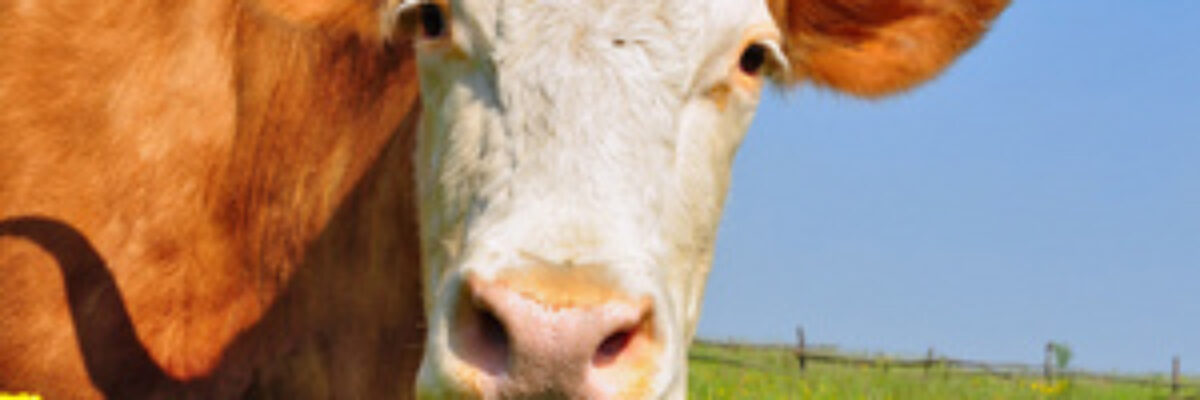Categories
Recent Posts
- Do these 7 things in spring pig breeding to reduce the number of pigs getting sick!
- Five ways to save money raising sheep!
- How to treat piglets without food? How do piglets lose weight without eating?
- In spring, the incidence of rumen food accumulation in cattle is high, pay attention to strengthen prevention and control!
- How to treat the fecal water of pig farms? These methods are worth learning
- What are the characteristics of black nose sheep? What food does black-nosed sheep not eat?
- Six things must be done to raise cattle in spring!
- What are the symptoms of cattle anthrax? Will cattle get sick after using anthrax vaccine?
- Summer is hot! How to prevent heatstroke and reduce the temperature of dairy cows?
- What is the reason for lack of manganese in cattle? What should cattle do if they lack manganese?
Cattle farmers should understand the five “fatal” weaknesses of cattle!

Although cattle are tall, big and strong, they also have some “fatal” weaknesses. As a cattle breeder, you must understand and be familiar with them to better raise cattle and let them grow healthily
- The sweat glands of cattle are extremely underdeveloped
The sweat glands of cattle are distributed in the skin between the toes, mouth and nose. Compared with its huge size, the sweat glands of cattle are extremely underdeveloped. Therefore, when the weather is hot in summer, cattle are prone to problems, ranging from loss of appetite and slow growth to heatstroke and even death.
Therefore, in summer, we must do a good job in heatstroke prevention and cooling to prevent cattle from heatstroke. - The rumen of cattle is fermentation tank
There are a large number of microbiota in the rumen of cattle, just like a natural fermentation tank. It is these microbiota that enable cattle to decompose and digest various crude fiber feeds. This can be said to be an advantage of cattle, but it is also a “fatal” weakness. When cattle eat a large number of foods that are easy to ferment, such as grain feed, young forage, etc., these foods ferment rapidly in the rumen and produce a large amount of gas, which will cause acute rumen flatulence in cattle, and if not treated in time, it is likely to lead to the death of cattle.
At ordinary times, cattle should avoid eating a large amount of fermented food such as grain feed, young forage grass, etc. When there is acute rumen flatulence, they can take anti-gas drugs, or deflate through gastric tube, rumen puncture and other methods. - The omasum of cattle is easily blocked
Cattle have four stomachs, and the third stomach is called the omasum (also called louver), which is composed of leaf flaps of different sizes. Its main function is to retain the rough part of the food, continue to grind it, and transport the thinner part into the abomasum, while absorbing a large amount of water and acid. However, the omasum is particularly prone to obstruction. When there is too much sediment in the food or the feed is crushed too fine, these fine particles will stay in the gullies formed by the leaf flap, thus causing the cattle to suffer from omasum obstruction.
The forage should be screened to remove sediment as much as possible, and the concentrate should not be crushed too fine. At the same time, the cattle should be provided with sufficient clean drinking water, so as to reduce the occurrence of cattle omasum obstruction. - The resistance of cattle is very poor
Although the adaptability and tolerance of cattle are very strong, they are different from the resistance. The resistance of cattle can be said to be very poor, especially in the case of some specialized beef cattle breeds that have not been vaccinated, as long as they encounter pathogenic bacteria (viruses), they may develop diseases, which is also an important factor in the prevalence of foot-and-mouth disease and bovine sarcoidosis.
The cattle must be vaccinated according to the epidemic prevention procedures, and pay attention to sanitation and disinfection, so as to reduce the occurrence of various infectious diseases in cattle. - Cattle have very strong tolerance
Cows have a very strong tolerance, which is exactly the opposite of resistance. Some people may ask, is it not a good thing to have a strong tolerance? Because of the strong tolerance of cattle, the symptoms of cattle in the early stage of illness are often not obvious, and the breeders can’t see any abnormality without careful observation. However, when the symptoms of cattle are more obvious, they usually reach the middle and late stage of the course of disease. If the symptoms are found at this time, it is more difficult to treat them.
These are the five fatal weaknesses of cattle. Cattle farmers must take preventive measures in advance, and take treatment measures immediately once abnormalities are found.
